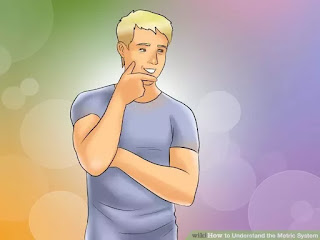Steps:
(1.) Familiarize yourself with the standard symbols
here is a little guide that shows you the basic symbols for all sorts of components. its handy to keep a little guide like this around in case you forgot some.
(2.) Look at the connections
physically parts are connected by wires, in the diagrams you will see black lines going from one part to the next. this means that you connect them with a wire
when the black lines cross in a diagram there are ways of telling whether or not the wires should be connected to each other.
(3.) Don't forget the polarity
some components to a circuit board are polarized, meaning one side is positive and the other is negative. this means you have to attach it in a certain way. for most symbols polarity is included in the symbol. in the the photos below you will find a guide to distinguishing polarity for various symbols.
*** TRY TO READ THIS SCHEMATIC ***
Okay, so now that we've gone through the basics, lets try to read a real world schematic of a circuit. so lets dissect this circuit!
the first symbol you see is the one with two horizontal lines, one smaller than the other. do you remember what is this? you can always look back at the guide, its a battery.
Next you can see that there is a line connecting the positive side of the battery to the second part which if you look back at the guide you will find is a switch with two positions: closed (on), and open (off). seems backwards? its not because if you think of that little door like thing on the symbol closing than it would complete the circuit, thus being "on".
So when we flick the switch closed where does the electricity go next? that squiggly line is a resistor. this is a symbol you REALLY want to memorize. they are in almost every circuit. Basically in just makes sure that the not too much power from the battery is sucked up by the next part by resisting the flow of electricity.
So the final part is the triangle thing. that is a diode (as you can see on that handy chart in this ible). in this case a light emitting diode, or LED. remember LEDs are polarized so when you actually go to make this circuit make sure you put it in right.
finally you can see that the negative side of the LED connects back to the negative battery terminal and the circuit is complete! And after this, you can now make your own FLASH LIGHT.
Next you can see that there is a line connecting the positive side of the battery to the second part which if you look back at the guide you will find is a switch with two positions: closed (on), and open (off). seems backwards? its not because if you think of that little door like thing on the symbol closing than it would complete the circuit, thus being "on".
So when we flick the switch closed where does the electricity go next? that squiggly line is a resistor. this is a symbol you REALLY want to memorize. they are in almost every circuit. Basically in just makes sure that the not too much power from the battery is sucked up by the next part by resisting the flow of electricity.
So the final part is the triangle thing. that is a diode (as you can see on that handy chart in this ible). in this case a light emitting diode, or LED. remember LEDs are polarized so when you actually go to make this circuit make sure you put it in right.
finally you can see that the negative side of the LED connects back to the negative battery terminal and the circuit is complete! And after this, you can now make your own FLASH LIGHT.
you can now continue on to building the actual thing!
Reference: http://www.instructables.com
















